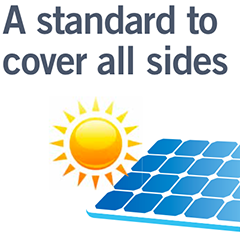While manufacturer Spitzenberger & Spies have discussed the DC aspect of the solar inverter in previous PES articles, they return to PES today to discuss the impact of an inverter’s DC and AC aspects…
In common solar installations the main focus of the owner is set to the maximum efficiency of the solar energy conversion. The main focus of the public utility companies is set to safety, monitoring and power quality aspects. The typical interconnection of a local solar installation with the public grid is:
The central element for the energy conversion is the solar inverter with a DC side and an AC side. For the DC side as well as for the AC side, several international electrical standards are specified to cover safety, functionality, efficiency and power quality of the solar installation (see table 1).
For the development and performance verification process of a modern inverter it is essential to reproduce the typical field installation and its parameters like different cell types, changing irradiation, partial shading and many more. Around the central component to be tested, the solar inverter, the DC input side needs to be simulated as well as the AC output side (see Fig. 1). For each component inside such a laboratory environment, several requirements exist in the covered standards as well as per physical limitations.
To simulate the DC side of the solar inverter, a high speed PV simulator is necessary which is able to reproduce the dynamic generation of the solar irradiation. The technical design must be linear technology to be fully compliant to the requirements of the EN50530 (see Infobox “Necessity for high speed PV Simulators”).



























